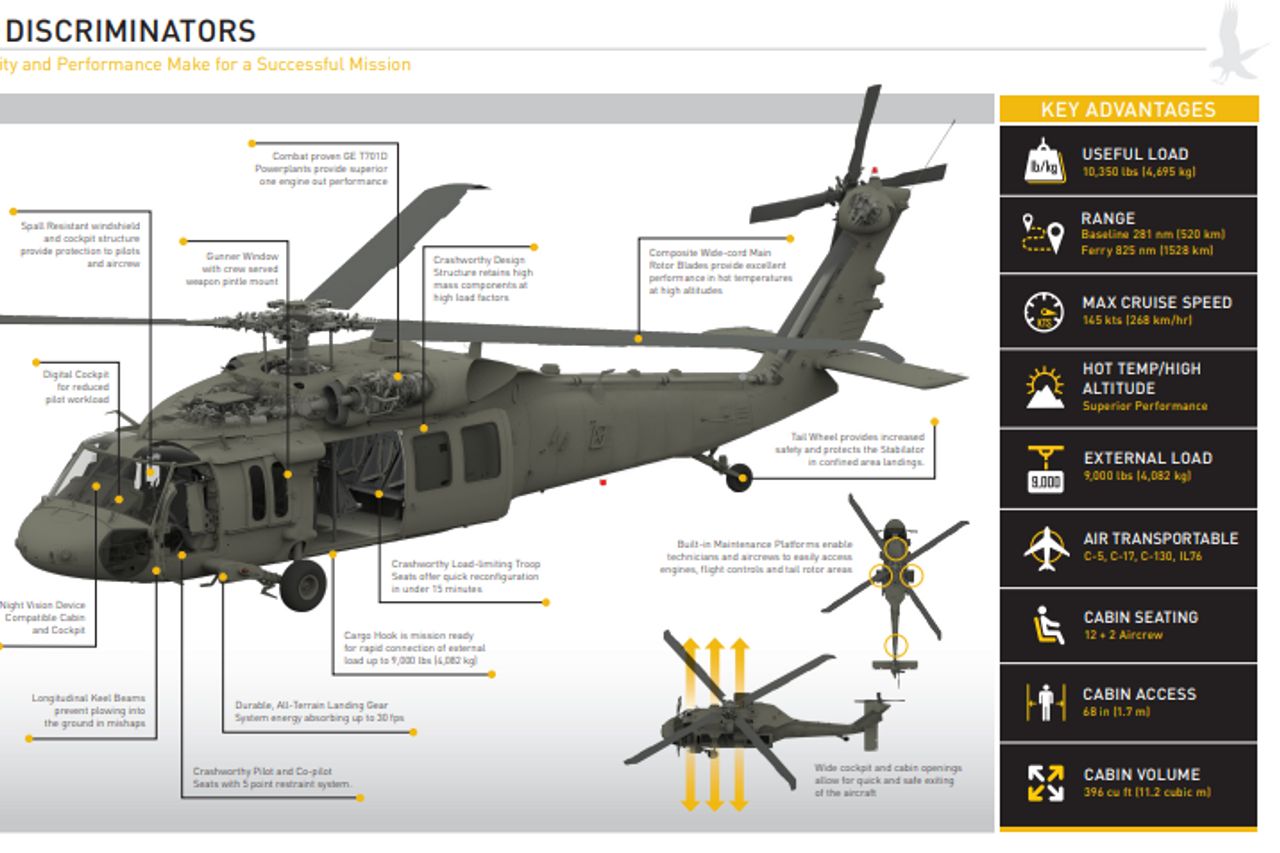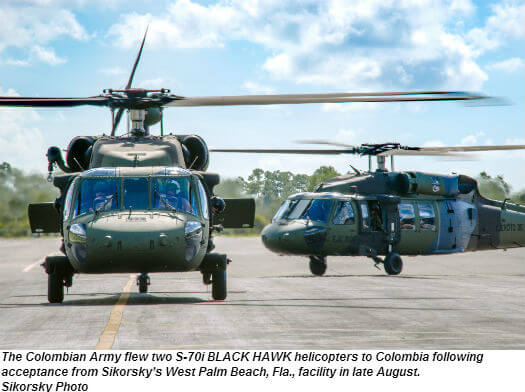How the Sikorsky S 70 Stands Apart in the Helicopter Market
How the Sikorsky S 70 Stands Apart in the Helicopter Market
Blog Article
Rotary-Wing Airplane Offering Superior Sturdiness and Precision Design
In the realm of aeronautics, rotary-wing aircraft have actually long been acknowledged for their special capacities in numerous operational environments. From army objectives to private applications, the advancement of rotary-wing modern technology has led the way for machines that offer exceptional toughness and accuracy engineering. Through innovations in materials and building techniques, combined with advanced flight control systems, these airplanes have actually come to be important tools for tasks that require both toughness and precision. As we discover the complex balance in between technology and reliability in rotary-wing aircraft, it becomes evident that the merging of advanced modern technology and tried and tested design concepts has actually established a new criterion for performance and effectiveness in the aerospace industry.
Development of Rotary-Wing Technology
Throughout the background of air travel, the development of rotary-wing innovation has actually been a testament to constant advancement and development in aeronautical design. From the early days of upright flight with fundamental designs to the innovative helicopters and other rotary-wing aircraft these days, the development in this field has actually been amazing.
In the very early 1900s, leaders like Igor Sikorsky and Juan de la Cierva made substantial strides in rotary-wing modern technology. Sikorsky's VS-300 helicopter, very first flown in 1939, marked a pivotal moment in the advancement of sensible rotary-wing airplane. This success paved the way for further innovations in vertical flight capabilities.

Today, rotary-wing aircraft play critical roles in different industries, including military operations, emergency medical services, regulation enforcement, and commercial transportation. The development of rotary-wing technology remains to press the borders of what is possible in vertical trip, guaranteeing that these aircraft continue to be important possessions in the air travel market.
Products and Building Innovations
Showing a combination of cutting-edge materials and specific construction strategies, rotary-wing aircraft have actually undergone substantial advancements in sturdiness and efficiency. Among the essential innovations in products utilized for rotary-wing aircraft is the raising use of composite materials. These materials, such as carbon fiber strengthened polymers, provide a high strength-to-weight proportion, enhancing both the structural stability and general efficiency of the aircraft. Additionally, developments in manufacturing processes have permitted more specific and complex building of rotary-wing parts, adding to improved aerodynamics and efficiency.
In addition, the assimilation of advanced finishes and surface area therapies has actually played an important role in boosting the toughness of rotary-wing airplane. These layers supply protection against deterioration, abrasion, and extreme weather, extending the life expectancy of the airplane and decreasing upkeep demands.
In regards to building and construction developments, additive manufacturing, likewise known as 3D printing, has revolutionized the manufacturing of complicated elements for rotary-wing airplane. This innovation enables fast prototyping and personalization, bring about much faster growth cycles and reduced prices. Generally, the continuous evolution of materials and building and construction strategies is driving the capacities and performance of rotary-wing aircraft to new elevations.
Precision Flight Control Systems

The assimilation of GPS innovation even more enhances the accuracy and integrity of these systems, enabling exact navigation, waypoint tracking, and automated flight control. sikorsky s 70. This level of accuracy not only improves the security of rotary-wing operations but likewise improves total functional efficiency and mission efficiency
Furthermore, the continuous advancements in synthetic knowledge and artificial intelligence have actually helped with the development of independent trip abilities within Precision Flight Control Equipment. This allows rotary-wing aircraft to execute complicated missions with blog unparalleled precision and consistency, making them indispensable properties in a vast array of applications, consisting of armed forces procedures, search and rescue objectives, and aerial digital photography.
Resilience in Testing Atmospheres
Popular operational setups, rotary-wing aircraft show outstanding resilience and effectiveness, guaranteeing optimum performance under difficult environmental conditions. These airplanes are developed to hold up against a broad array of environmental factors, consisting of extreme temperatures, high winds, and harsh surface, making them appropriate for check various missions in varied landscapes.
One crucial element adding to the durability of rotary-wing aircraft is their tough building and construction. These aircraft are developed making use of premium products and progressed engineering techniques to improve their architectural honesty and reliability. Furthermore, elements such as rotor blades, engine systems, and touchdown gear are thoroughly developed to stand up to the stress and anxieties and pressures run into throughout operations in difficult settings.
Additionally, rotary-wing airplane are outfitted with innovative onboard systems that monitor performance metrics in real-time, enabling proactive maintenance and early discovery of prospective problems - sikorsky s 70. This positive technique assists stop unforeseen failures and guarantees the continued airworthiness of the airplane in requiring functional settings. In general, the toughness of rotary-wing airplane in difficult atmospheres is a testament to their superior design and style, making them important assets for various mission-critical procedures
Maintenance and Reliability Standards
The adherence to rigorous upkeep and dependability standards is extremely important in making certain the ideal performance and safety and security of rotary-wing aircraft. Regular upkeep checks, conducted by qualified service technicians, are important to determine and resolve any type of potential concerns before they endanger the aircraft's capability. These checks include a comprehensive assessment of all crucial parts, including the engine, rotor system, avionics, and hydraulic systems, to ensure that they remain in prime working problem.
Moreover, adherence to arranged upkeep intervals in conformity with producer standards is crucial for maintaining the airplane's reliability. This aggressive approach assists protect against unexpected malfunctions and ensures that the aircraft stays airworthy for its desired missions. Furthermore, the execution of durable dependability criteria, such as regular component testing and replacement based on fixed lifecycles, better enhances the aircraft's dependability.
Final Thought

To conclude, the innovations in rotary-wing aircraft technology have caused remarkable longevity and precision design. With innovative materials and construction techniques, along with precision trip control systems, these airplane can run in challenging environments with increased reliability. The maintenance and reliability criteria make certain that these rotary-wing airplane remain to execute at their ideal, making them crucial properties for various sectors.
Showing a combination of innovative materials and precise building and construction strategies, rotary-wing airplane have undergone substantial improvements in sturdiness and performance. One of the key technologies in products used for rotary-wing airplane is the boosting usage of composite materials.With careful interest to information and progressed technological assimilation, rotary-wing aircraft have actually accepted Precision Trip Control Systems as a keystone of their operational quality. Generally, the resilience of rotary-wing airplane in challenging settings is a testament to their premium engineering and layout, making them important assets for different mission-critical operations.
In final thought, the advancements in rotary-wing aircraft modern technology have led to premium sturdiness and accuracy engineering.
Report this page